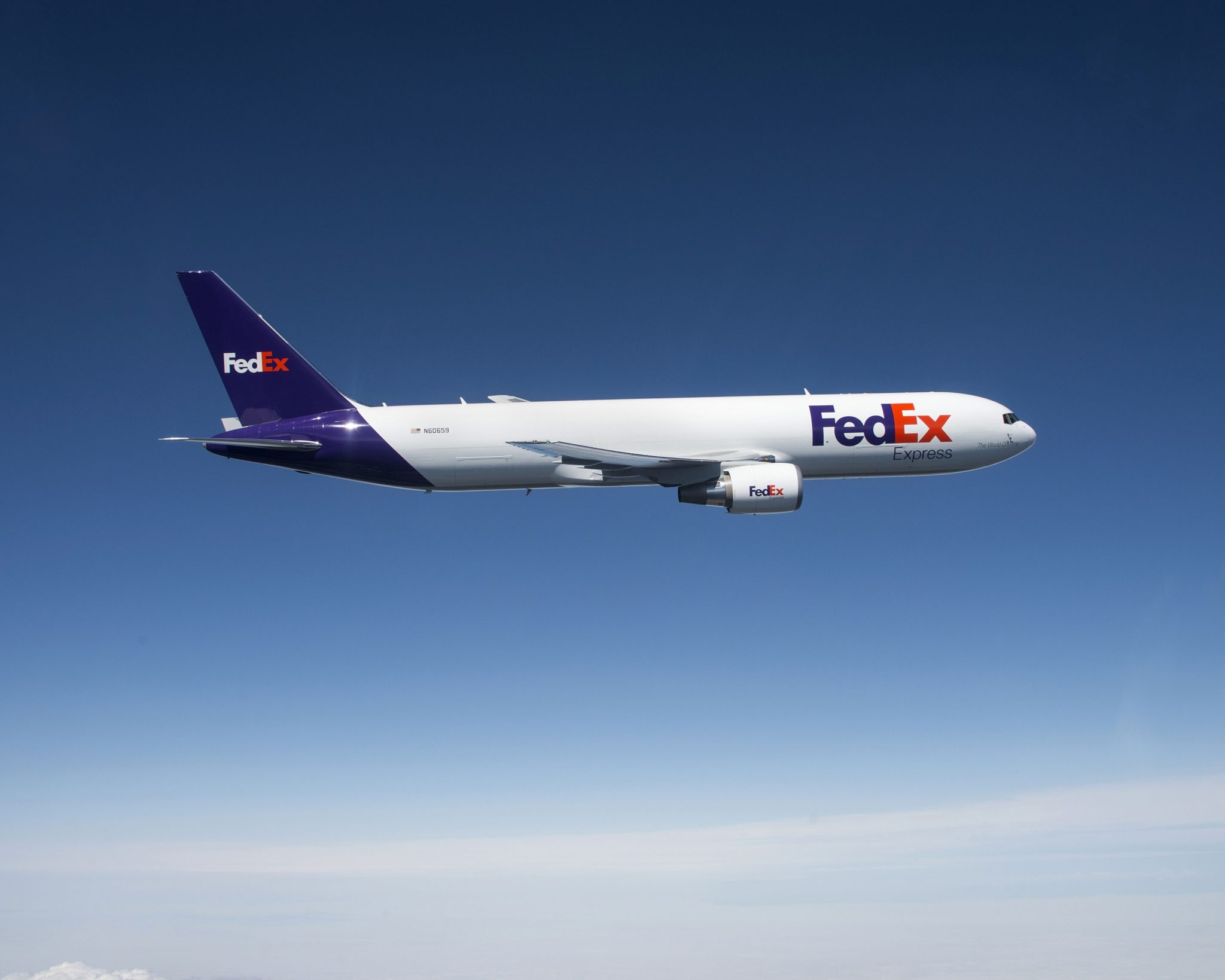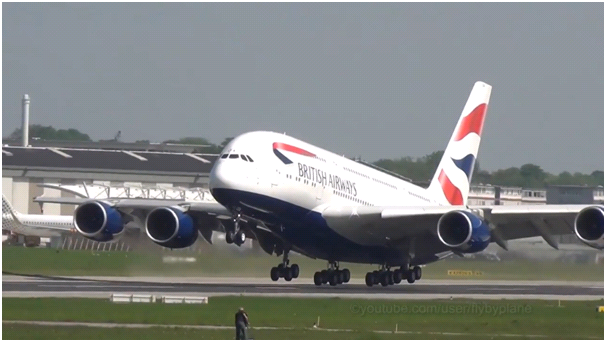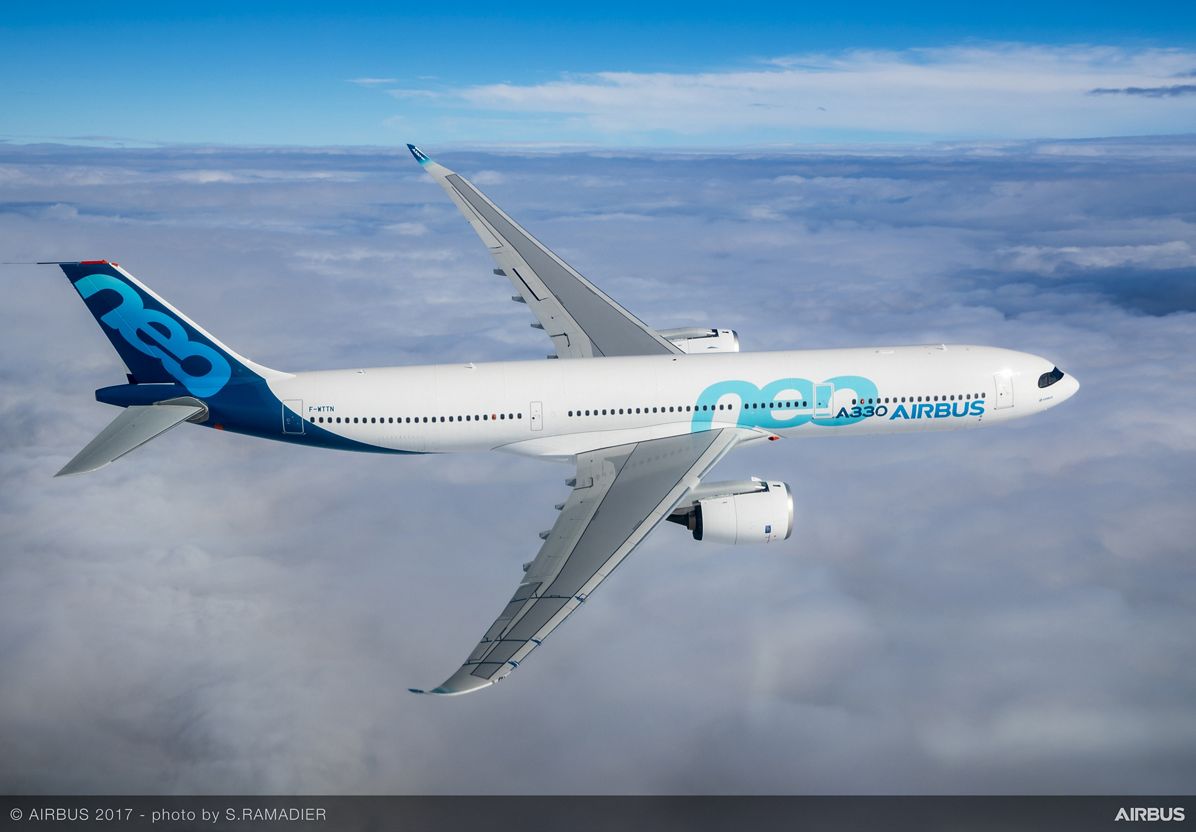Leeham News and Analysis
There's more to real news than a news release.
Best business; Under-floor Cargo or Dedicated Freighter?
Subscription Required
By Bjorn Fehrm
Introduction
June 16, 2022, © Leeham News: What is the best business; to transport cargo below the floor in passenger airliners or dedicated freighter aircraft?
The market clearly says both, as this is the state of affairs. Market economy says a business will find its optimal form, and it’s about fifty-fifty now. But what are the plus and minuses of these two very different ways of transporting cargo, and why do we have the present situation?
We search for answers by looking at the transport fundamentals and comparing costs with revenues.
Summary
- About half of the world’s cargo flies in the bellies of passenger aircraft, and the other half flies on dedicated freighters.
- What are the factors that have created this division, and will it change?
Impact of Russian Airspace Closure for mid-European freight airlines
Subscription Required
By Bjorn Fehrm
Introduction
May 12, 2022, © Leeham News: Last week, we looked at what the closure of Russian airspace would mean for a mid-European airline that flies to Asia destinations like Japan, Korea, or Mainland China.
Air France now flies the routes from East Asia south of Russian airspace instead of over Siberia. The route is longer which increases the operating costs, but with the examples Boeing 777-300ER, there are no restrictions on passenger load factors, and most times, the cargo space can be loaded to the volume limit.
For a freight airline flying similar routes, the added distance impacts payload, as freighters have about 2,000nm less range than their passenger siblings. We check the operating cost and payload impact for mid-European freighter airlines flying from Far-East freighter hubs to West Europe.
Summary
- A freighter airline takes a heavier hit from Russian airspace closure.
- As the extra distance eats into the possible payload, the operating cost per tonne for hubs like Shanghai, Seoul, and Taipei increases more than for the airline’s passenger service.
An A330neo freighter, should it happen?
Subscription Required
By Bjorn Fehrm
Introduction
April 7, 2022, © Leeham News: Last week, we started a discussion on what should be Airbus’ response to a 787 freighter. We have seen in a series of articles that the 787 freighter would beat the present A330 freighter, and the question is, will Airbus leave this segment to Boeing, or will it respond?
We look at what’s involved for Airbus to upgrade the present A330-200F to a neo freighter and what performance it would have compared to a 787 freighter.
Summary
- An upgrade of Airbus’ present A330-200F freighter to a neo variant based on the longer, more capable A330-900 would be a modest project for Airbus. All the special bits needed were developed for the A330-200F.
- The resulting A330-900F would be a competitive freighter, and as all needed parts are in serial production today, it could hit the market before a Boeing 787 freighter.
A Boeing 787 freighter, which model and how good? Part 2
Subscription Required
By Bjorn Fehrm
Introduction
March 24, 2022, © Leeham News: Last week, we discussed the creation of a Boeing 787 freighter. It shall replace the Boeing 767-300F, which is running into emission rule problems in 2027.
After looking at what 787 variant makes for the best freighter, we now compare the economics of the 787, 767-300F, and A330-200F freighters.
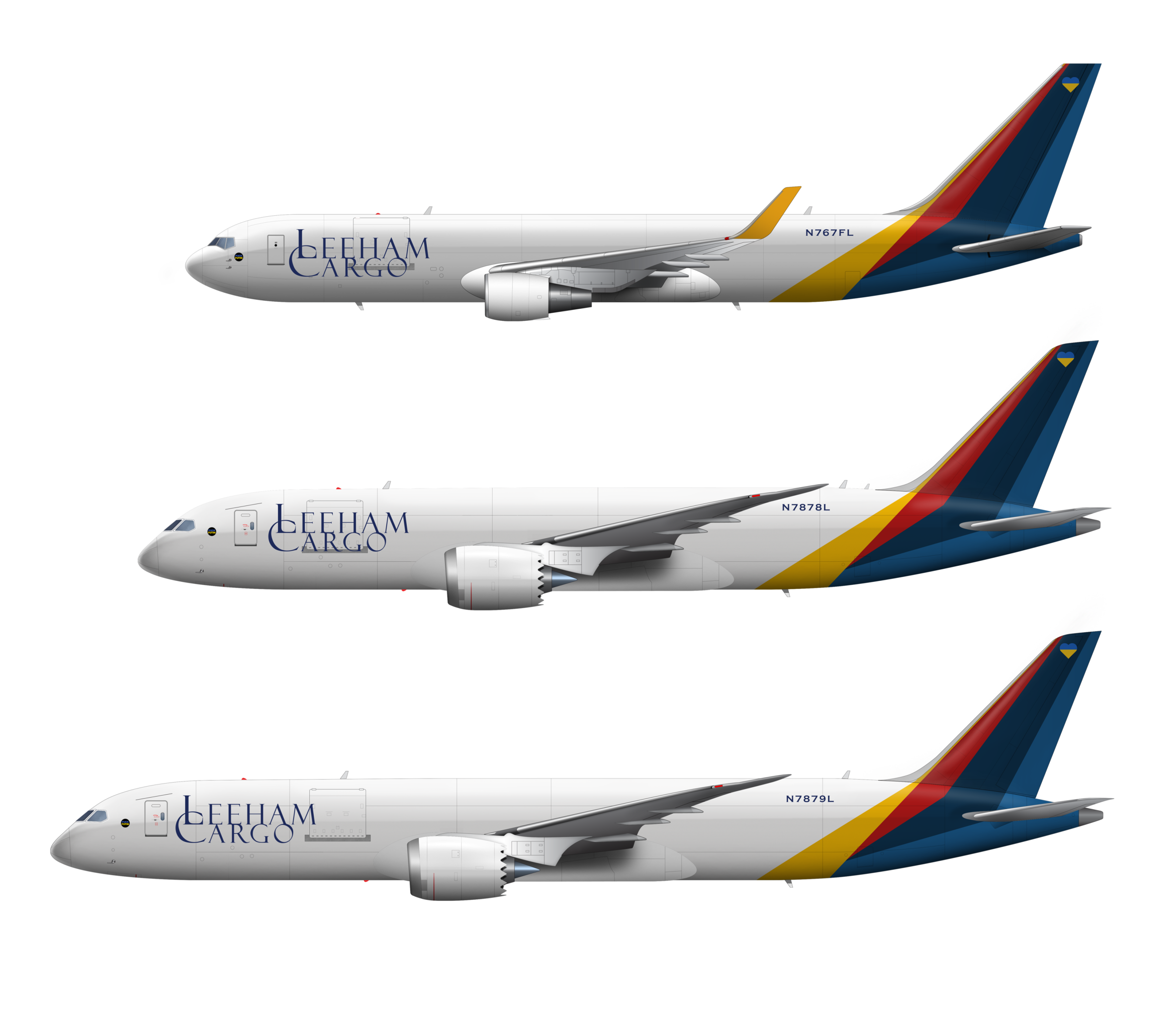
Figure 1. The 767-300F freighter (top) and its possible replacements: 787-8F (middle) and 787-9F (bottom). Source: Leeham Co.
Summary
- When a Boeing 787 freighter arrives at the decade’s end, its economics will change the freighter market’s dynamics.
Airbus brings BelugaST to outsized cargo market
By Bjorn Fehrm
January 25, 2022, ©. Leeham News: Airbus has decided to bring the original Beluga fleet, BelugaST (A300 based), on the market for outsized freight transport, as the newer BelugaXL (A330 based) caters for Airbus internal needs.
It has a larger cross-section than the AN-124, a tad longer freight compartment, and loads outsized but less heavy cargo. When all BelugaXLs are delivered, the ST will be spun off to a dedicated external freight company, Airbus Beluga Transport.
Air freight growth: one-hit wonder or long-term trend?
Subscription Required
By Judson Rollins
Introduction
January 13, 2022, © Leeham News: COVID-19 has upended the freight world, with air delivery now becoming relatively economical versus the high premium they previously commanded over sea freight. While air freight yields on most trade lanes are 2-3x their pre-pandemic levels, sea freight yields are 8-10x their 2019 levels in lanes like Asia to North America and Asia to Europe.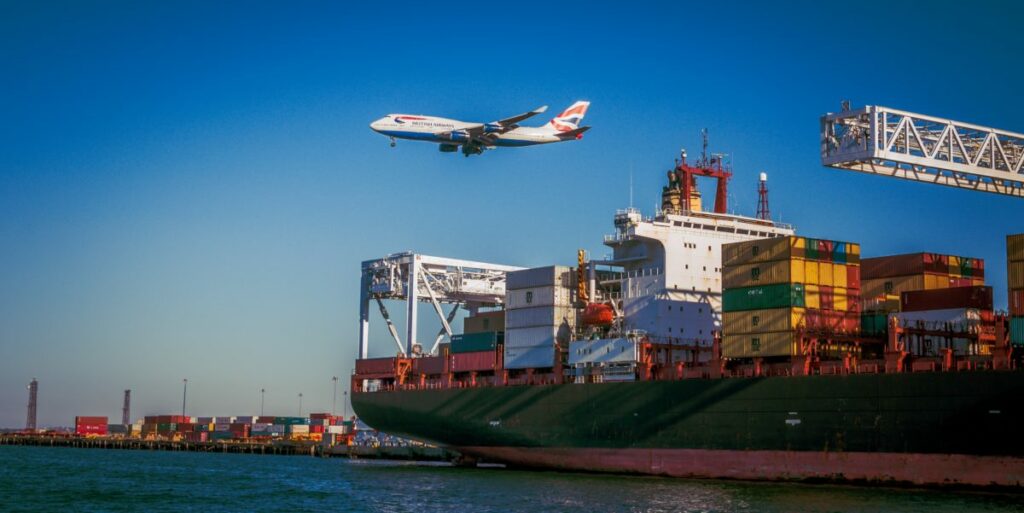
Sea freight schedule reliability has fallen sharply over the past 18 months driven by a spectrum of port, labor, and container availability issues. Shippers are increasingly frustrated by the large and growing number of “blank sailings,” the industry’s term for canceled departures.
To offer customers backup options – and increase their value capture – ocean freight carriers are starting to buy their own aircraft. Maersk announced its purchase of two Boeing 777Fs in November, while CMA CGM Group said in December that it would order four Airbus A350Fs to complement its existing fleet of five Airbus A330Fs.
As the COVID crisis extends into its third year, will air freight demand prove sustainable at today’s levels? To what extent will capacity increase to match?
Summary
- Sea freight capacity will remain tight for the foreseeable future.
- New-build freighter availability is limited at present.
- Today’s air freight demand spike is unlikely to last beyond mid-decade.
One A380 departure or two 777-200ER alternatively 787-9? Part 2.
Subscription Required
By Bjorn Fehrm
Introduction
December 9, 2021, © Leeham News: Last week, we checked the economics for an airline that dispatches one A380 instead of two smaller widebodies on a trunk route with heavy traffic.
Our example was modeled after British Airways, which uses the A380 on its highest volume Heathrow departures. We modeled flights where we only considered the passenger payload and looked at operating costs. Now, we add cargo to the mix and look at the generated on the flights.
Summary
- The A380 was surprisingly competitive against the compared aircraft when we looked at passenger traffic.
- As expected, when cargo is added, the A380 competitiveness declines. It’s now a matter of what a slot more costs on the departure and destinations airports.
One A380 departure or two 777-200ER alternatively 787-9?
Subscription Required
By Bjorn Fehrm
Introduction
December 2, 2021, © Leeham News: With the last Airbus A380 rolling of the production line in days, we started looking at why the A380 didn’t sell last week. Now we check its economics for an airline that can fill it. We fly one A380 versus two departures of smaller aircraft on a typical trunk route.
Our analysis takes British Airways as an example and whether it shall use an A380 on Heathrow to LAX at peak traffic or rather two departures with its Boeing 777-200ER or 787-9.
Summary
- When you can fill the A380, it’s surprisingly competitive even against a more modern aircraft like the 787-9.
- This is when we focus on passengers and cost.
- We change the analysis angle next week when we add cargo and look at margins rather than cost.
Airbus details A350F specifications
By Scott Hamilton and Bjorn Fehrm
November 11, 2021, © Leeham News: Airbus has given more information about what led to their new freighter, the A350F, and its data. Scott Hamilton talked to Airbus Chief Commercial Officer Christian Scherer at the IATA AGM on Oct. 3-5 in Boston, and Bjorn Fehrm spoke to Head of Freighter marketing, Crawford Hamilton, about the technical details. (The two Hamiltons are not related.)
The A350F is the most capable new-build freighter Airbus has designed, posing the most serious threat to Boeing’s dominance of jet freighters since the dawn of the jet age. Some expect Boeing to respond next week with a program launch of the 777XF, but LNA understands this won’t be the case.
“The market has asked us to produce it,” said Scherer of the A350F. “So we launched the program based on our own belief of the strength of the business case.”
“The A350F beats the competing production freighter (Boeing’s 777F, our note) on payload, volume, and economics,” says Crawford Hamilton. “We have taken extra care to make the door larger and the floor extra sturdy to ease loading planning and execution. The A350F will be the freight forwarder’s preferred machine.”
Single aisle or Widebody over the Atlantic at low load factors, Part 3?
Subscription Required
By Bjorn Fehrm
Introduction
November 11, 2021, © Leeham News: Last week, we compared the economics of an Airbus A321XLR and A330-200 on our thin route over the Atlantic. The XLR improves the capabilities of the A321 quite a bit, not only on range but also on load-carrying ability.
The more efficient use of the space below the floor leaves room for cargo once the passenger bags are loaded. The margin race between the A321XLR and the A330-200 depended on the cargo pricing in the end. Now we finish the series with a more challenging setup for the twin-aisle.
We assume we use an A330-900, a nominal 300 seater on the Dublin to Newark route with only 130 passengers per departure. The load factor is then at 43%. Can the twin-aisle still earn the margin of an A321XLR on this route by virtue of its cargo capacity?
Summary
- The margin generation of the A321XLR versus the A330-200 was close. It boiled down to cargo pricing.
- The A330-900 adds costs but also more cargo room. Will it cover the extra costs?


